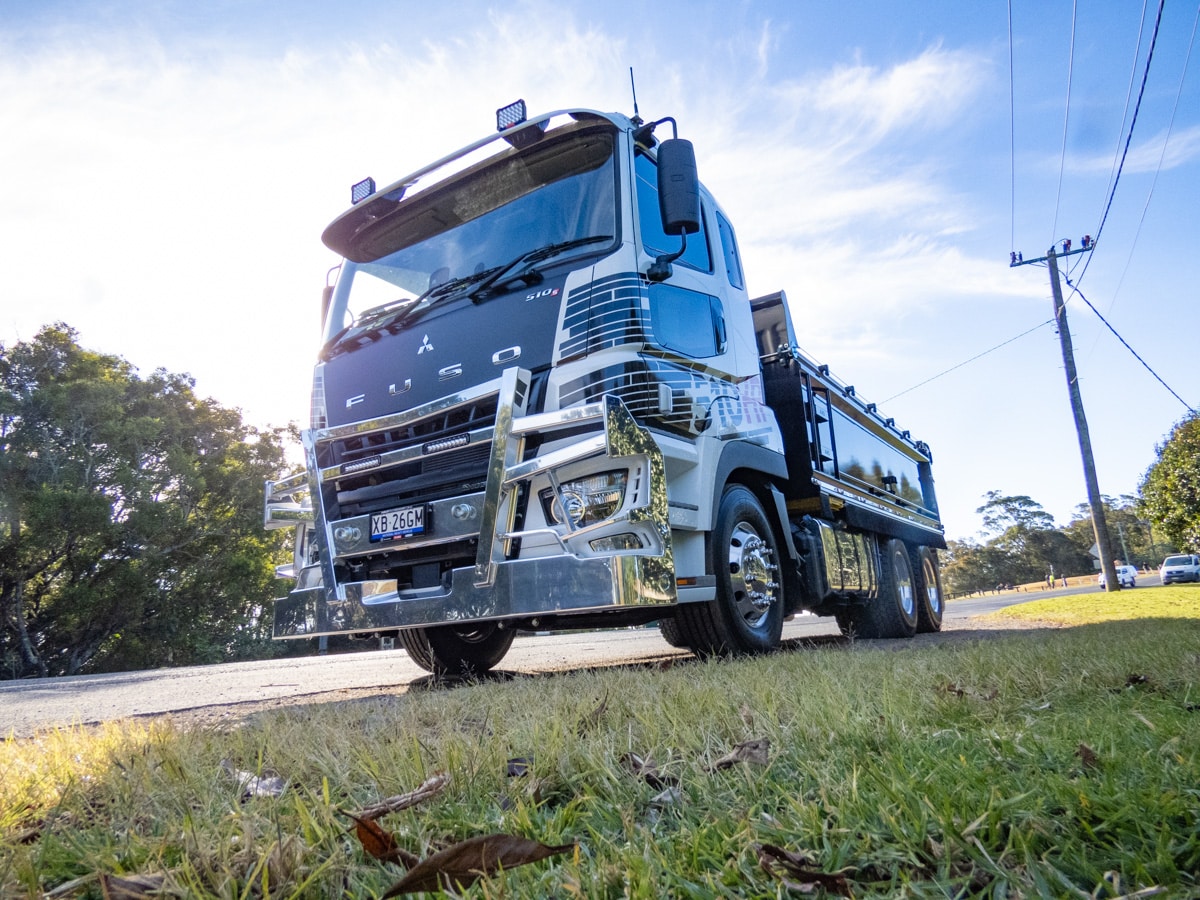There is no need to make driving a truck too complex and a simple no-nonsense approach will work most of the time. The Fuso Shogun 510 is an example of making driving a sophisticated truck relatively simple.
Ever since the first showing of the Fuso Shogun 510, it has been clear that this is the beginning of a transformation for Japanese trucks here in Australia.
For Fuso this has meant the introduction, in the heavy duty truck range, of drivelines and control systems from Europe and the US. In the Daimler Trucks organisation Fuso is the only brand playing in the lighter end of the truck market and still retains a mainly Japanese sourced designs in that market segment.
When it comes to the heavier trucks, the Japanese truck makers have, in the past, designed for their domestic market, with a preference for rigid trucks, 8×4 configurations and relatively high GCM levels. At the same time, those selling Japanese trucks in countries like Australia and New Zealand are looking for heavy duty prime movers and rigids running at much higher GCMs, like truck and dog combinations and some B-doubles.
This dynamic tension between the two conflicting philosophies has led to compromises between the two. Some are effective, while others are not so effective.
This changed when the Europeans moved over to owning a major slice of truck manufacturing in Japan, with Daimler’s purchase of Fuso and Volvo’s purchase of UD Trucks. The Daimler drive for a ‘global’ engine saw them look at the three major truck markets, the US, Europe and Japan, to come up with a solution which would suit all three, with minor adaptations from country to country.
At the same time, the global Volvo Group engine was being developed for Volvo, Mack and UD. From a global perspective, and looking at the figures, the truck makers decided the 13- and 15-litre engines were to be made for the US and Europe, but for the Japanese market, an 11-litre engine would suffice, in most cases.
While UD Trucks have stuck to the initial plan, and here in Australia the brand’s most powerful truck uses an 11-litre rated at 430hp, Daimler in Australia managed to convince its Japanese manufacturing arm to also include a 13-litre engine in the mix and to rate it at 510hp.
This gave Fuso an advantage in the Japanese-truck-orientated part of the Australian truck market, but would also give the brand a chance to compete directly with US and European competitors in sectors of the market that want 500-plus hp.
This opens up the intrastate heavy prime mover market, but also the heavy tipper and tipper and dog market, for a brand which has had limited success in this specialist sector.
This is how we come to the truck which is the subject of this road test, the Fuso Shogun 510 6×4 tipper. This is able to function as a single tipper or with a dog trailer, as it has the power to handle the 50-plus tonnes GCM needed in this space.
This design brings with it the kind of advantages we have come to expect from a Japanese truck. It shows the traditional virtues of a practical solution for a hard-working tipper operator able to stand up to the task, but also have a tare mass which comes in below the opposition’s.
Story with thanks to Power Torque




